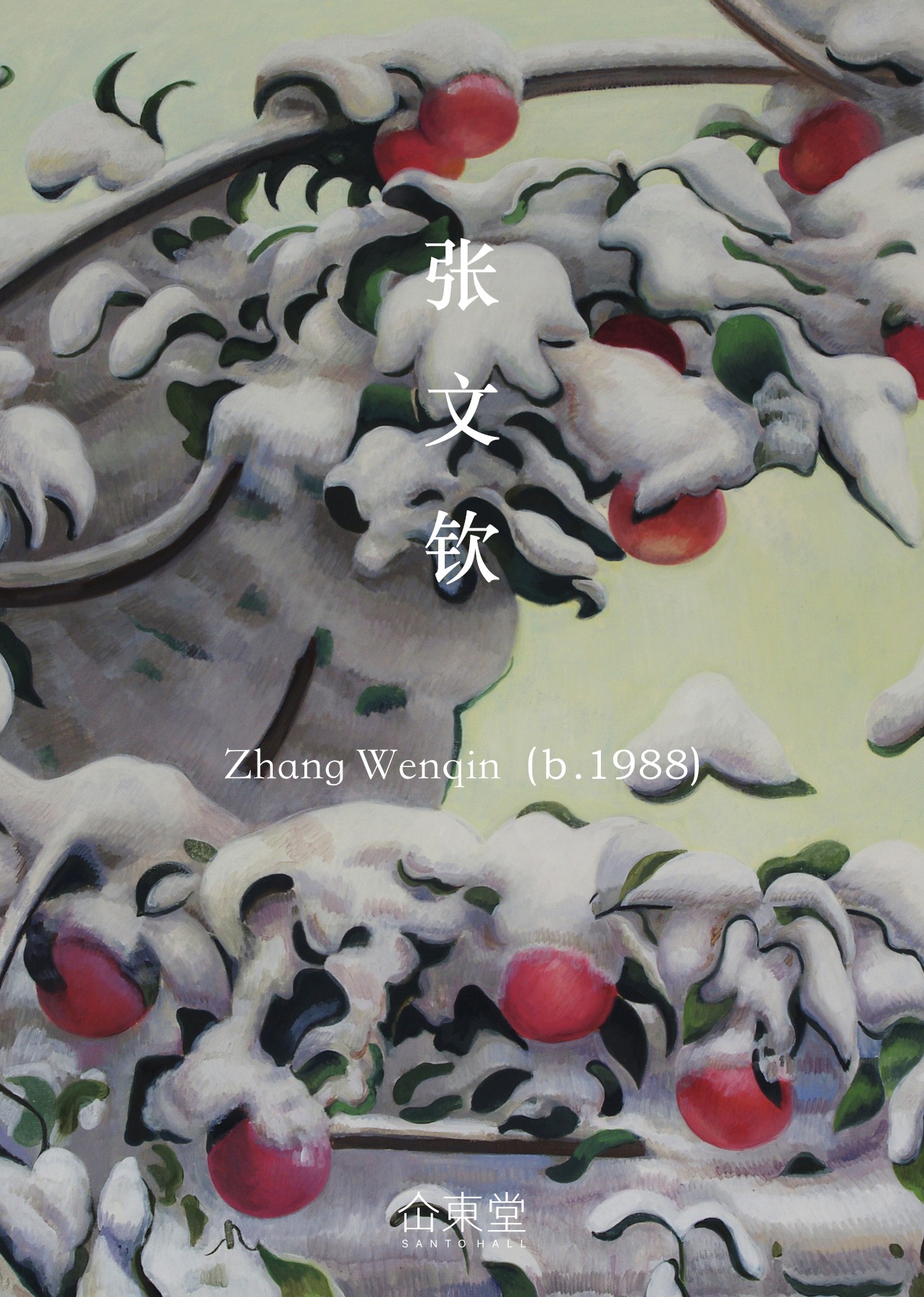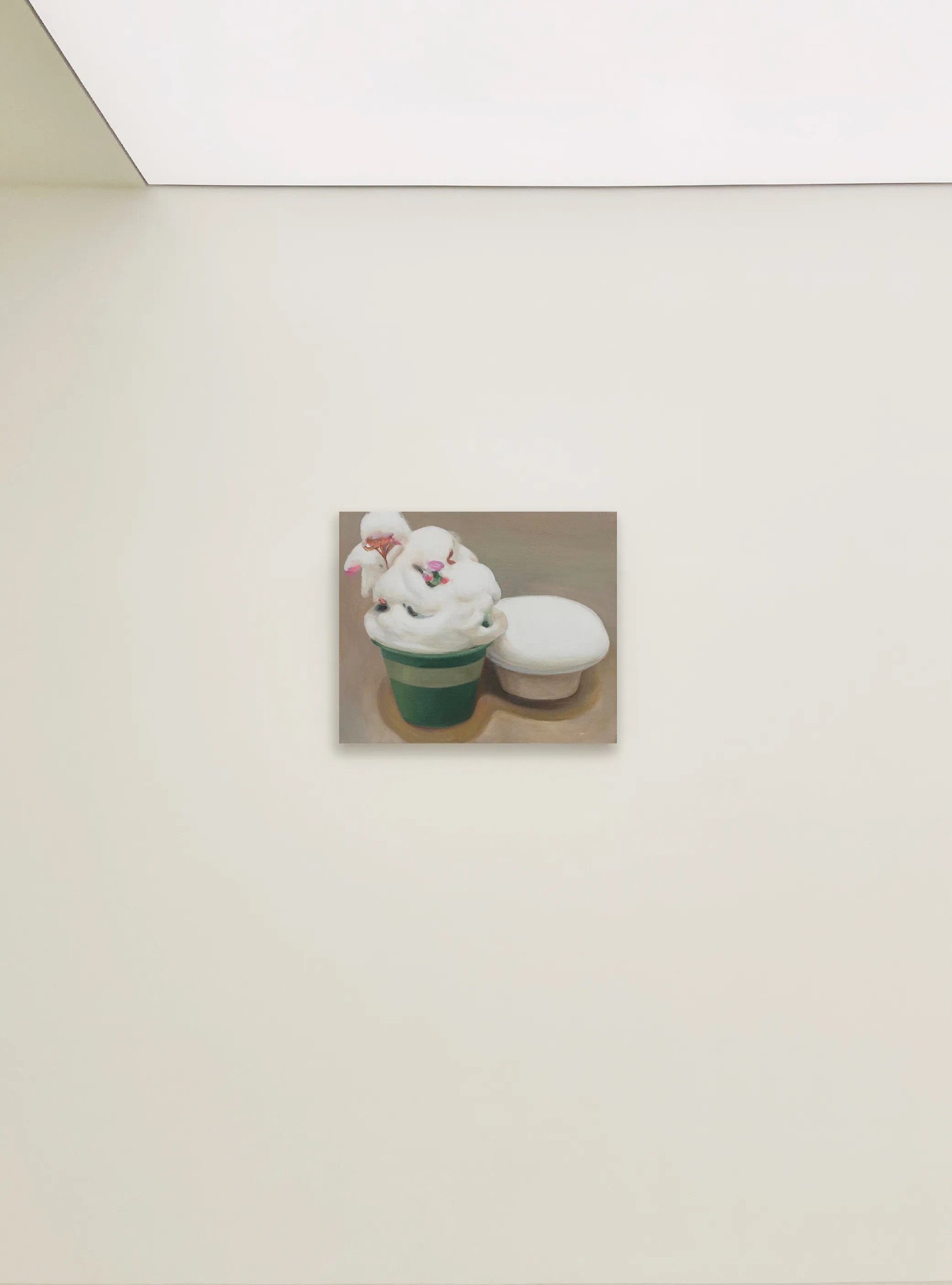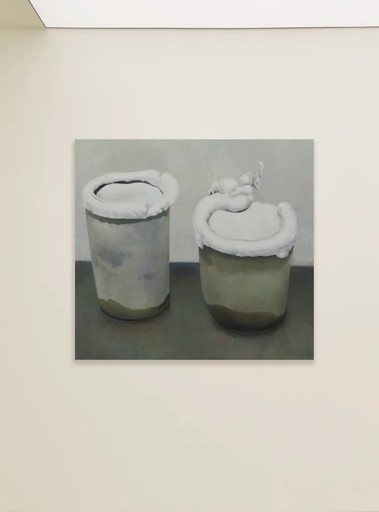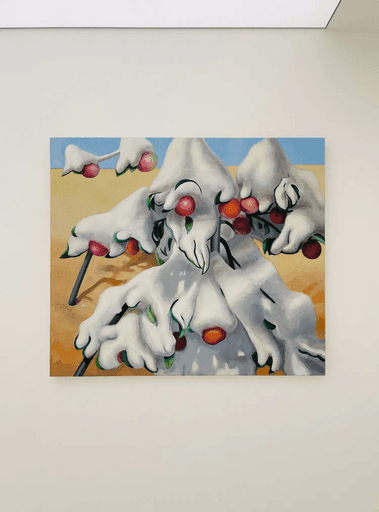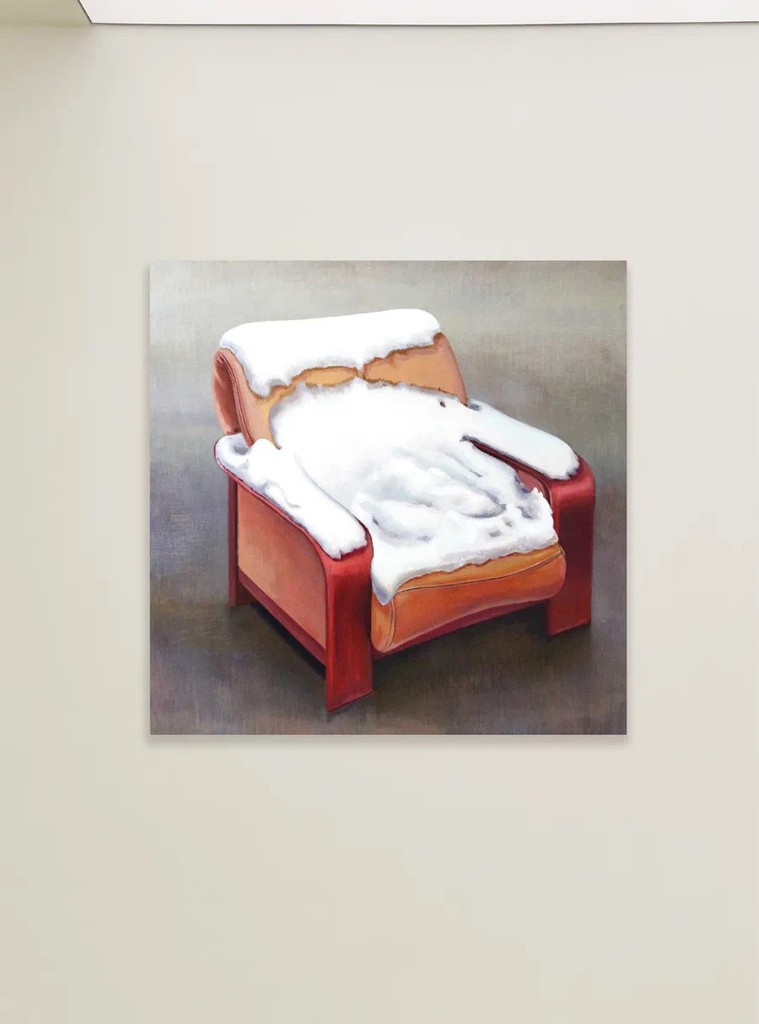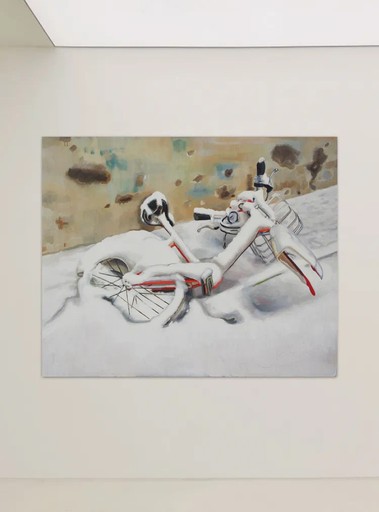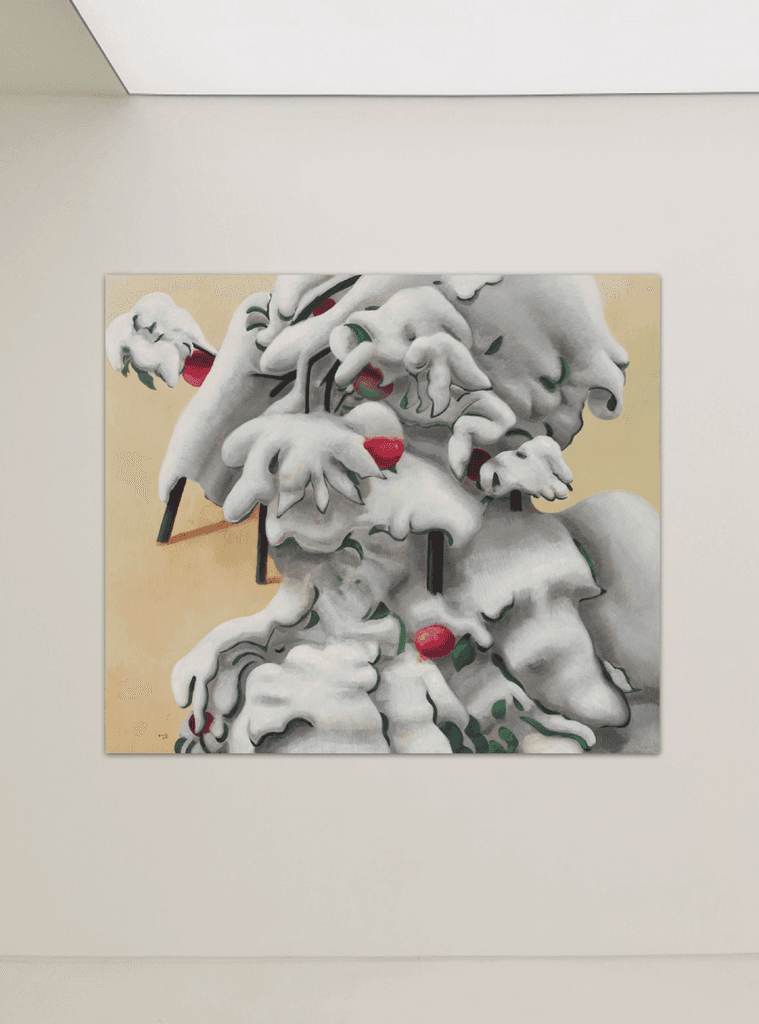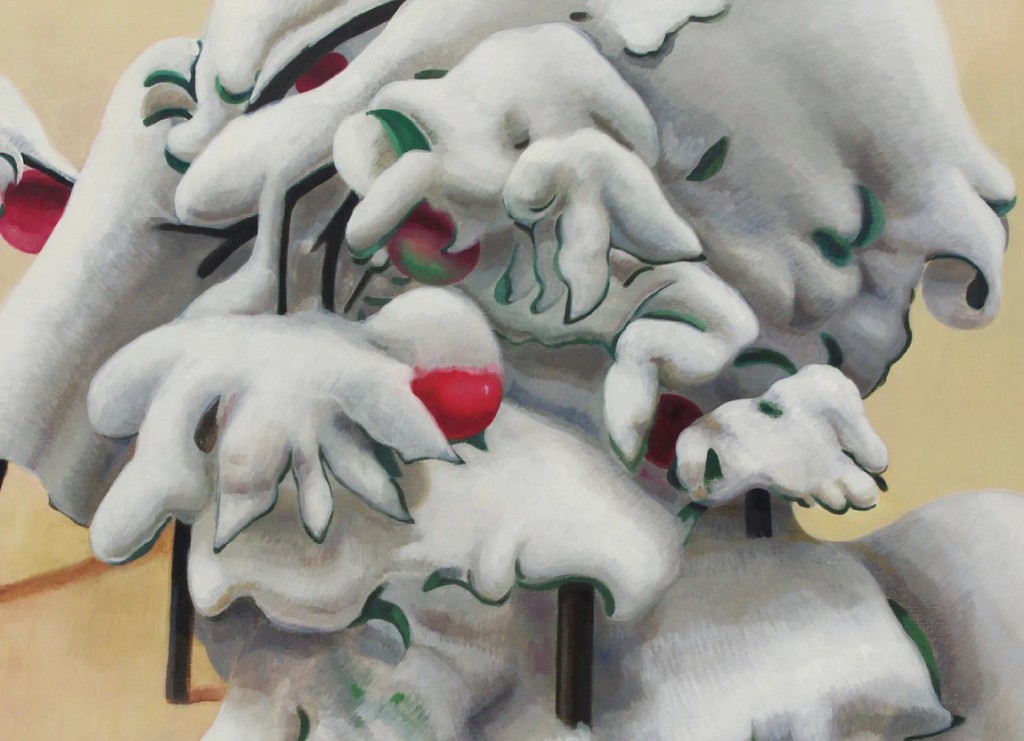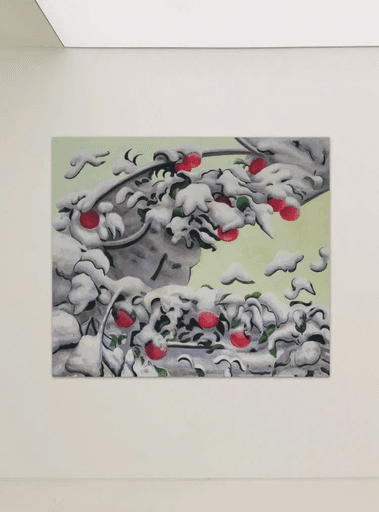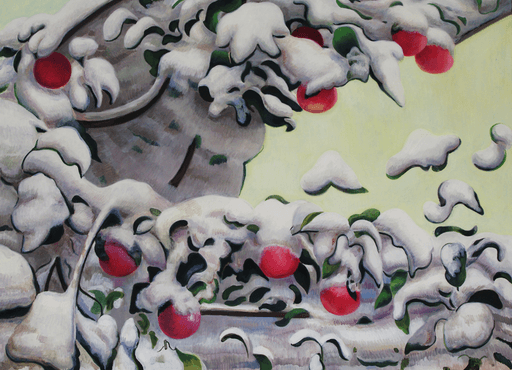雪中的温情
Warmth in the Snow
The snow that sits on the edge of the container, the flowerpot that opens up to the sky, the rough surface of the earthenware that is full of mottles, the spotless but fragile pieces of snow, and the plants that are sealed by the snow’s fluffiness. Everything is melting, and the moisture from the warming earth is beginning to climb up to the flowerpots. The things that have been locked away by the cold in winter are about to show their true colors, and the snow that covers them is about to disappear in this moment of gentle revealing. In the year 2012, Zhang Wenqin, from Yunnan province of the South, started living and working in Heiqiao, Beijing, as this is the winter he saw snow for the first time in his life,
It is not easy to describe snow, because the white in snow is not blank, but a combination of volume and thickness of white. The whiteness of clouds is distant and light, in contrast to the whiteness of snow, which is thick and dense. Zhang Wenqin said that there is a kind of sadness in snow as the edifice is on the edge of collapse, as if all perfect things are doomed to fail in the world, and snow is the state in which the perfect things falling from the sky fall into the ordinary things inevitably. Snow is not a piece of mud, on the contrary, Zhang Wenqin's snow vaguely retains the traces of the white space it once held up. Snow, as white and flawless falling being, becomes the snow contaminated with dirt, and this is the process of snow becoming an ordinary thing. The snow depicted by Zhang shows the thickness on top of this process.
The element that runs through all Zhang Wenqin's works is the sense of silence that snow brings to viewers’ acoustic sense. We all have the impression, at some point, of going out on a snowy morning and suddenly finding the world strangely quiet, because the snow absorbs so much of the white noise in the city. The snow has stripped away the details and grime of its covering, revealing a quiet self-consistency.
Like Morandi's still life works, Zhang Wenqin's paintings have a rustic and harmonious quality. In a still life of snow, it seems that the appearance of any sharp object will break a carefully protected visual field. In this field, all objects that once had obtuse angles were covered with a soft, thick layer of mud - a warm mud, so reserved and gentle that it blended with the object in a perfect way and melted away the absolute boundary between things until they were undivided. Yet the soil with such intimacy is not mud, but snow that is about to melt, as something that does not belong to the humanly world but is destined to sunk into the earth.
It is not difficult to see that Zhang Wenqin's painting begins with the image of snow but does not end with it. Based on the direct painting of realism, he explores the possibility of the sense of volume that whiteness can create through color blending and brushwork, and the poetry evoked by the imagery of snow in the process. It should be said that the artist's starting point is realism, so the brush strokes and objects in the painting are working on a cautious and restrained manner. The poetry based on image does not depend on the rendering of additional colors and strokes but is directly completed by the strokes that compose the image itself. These brushstrokes that constitute the image of snow include not only the artist's subtle control of brushstrokes and colors in his long-term painting experiences, but also his own intuitive experience of snow. The premise of mining poetry from snow images is that the artist himself finds poetry in his experience with snow.

